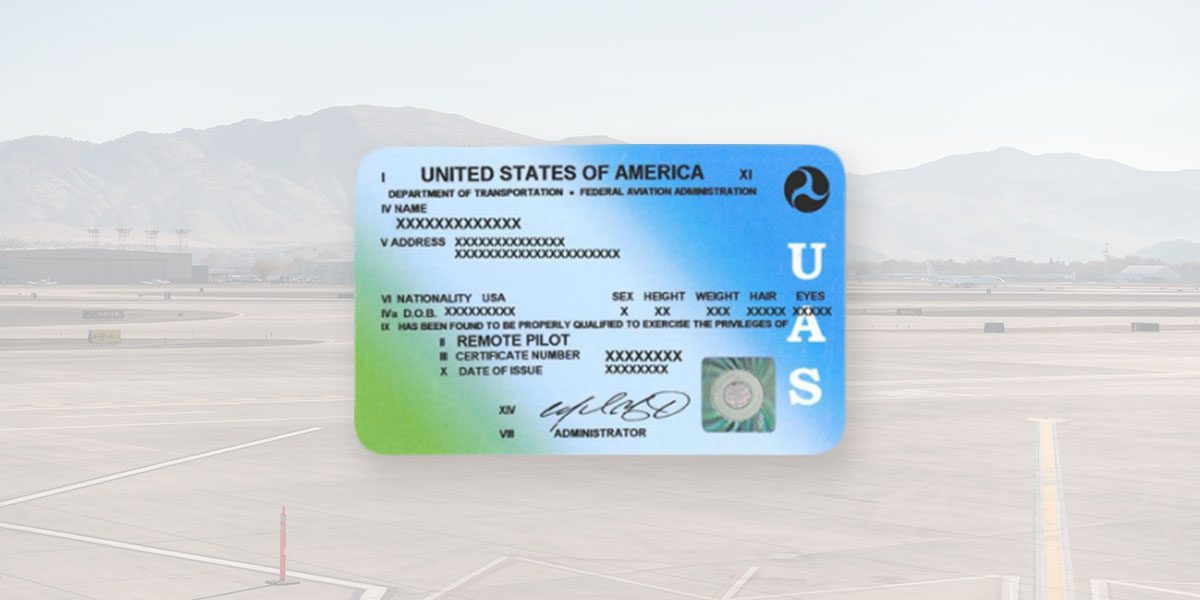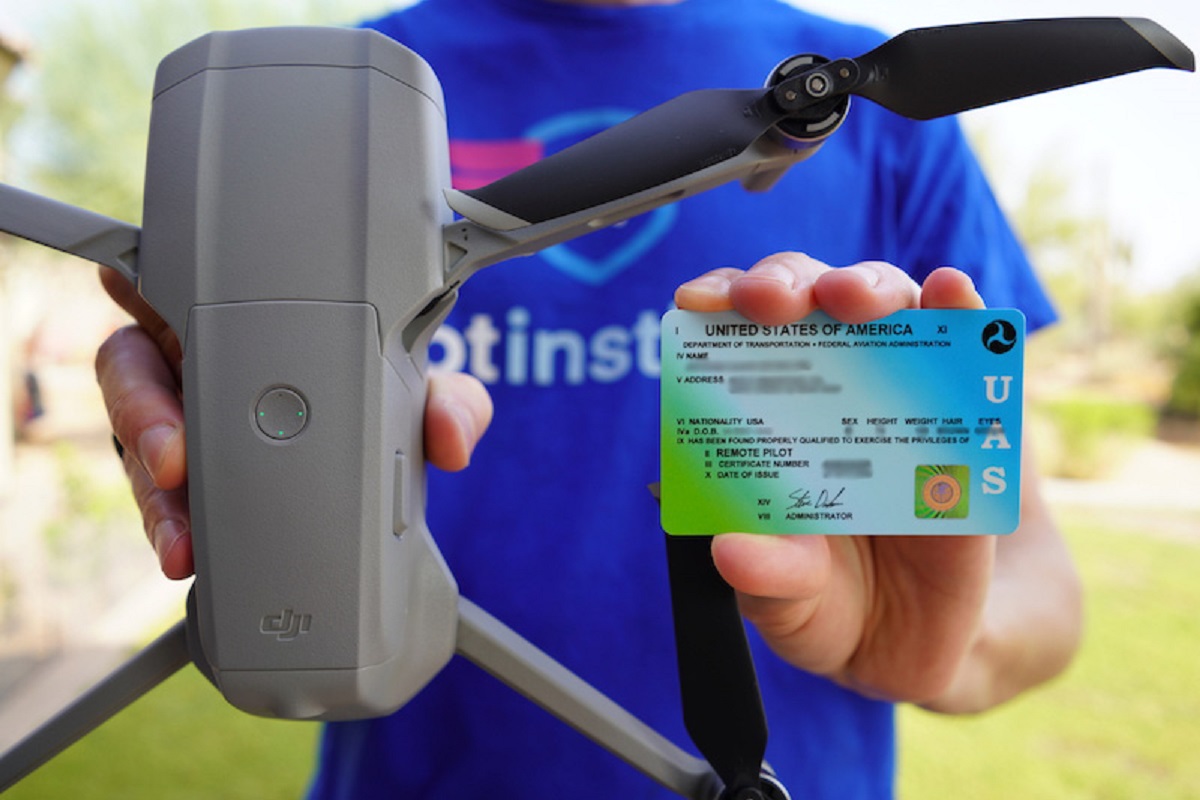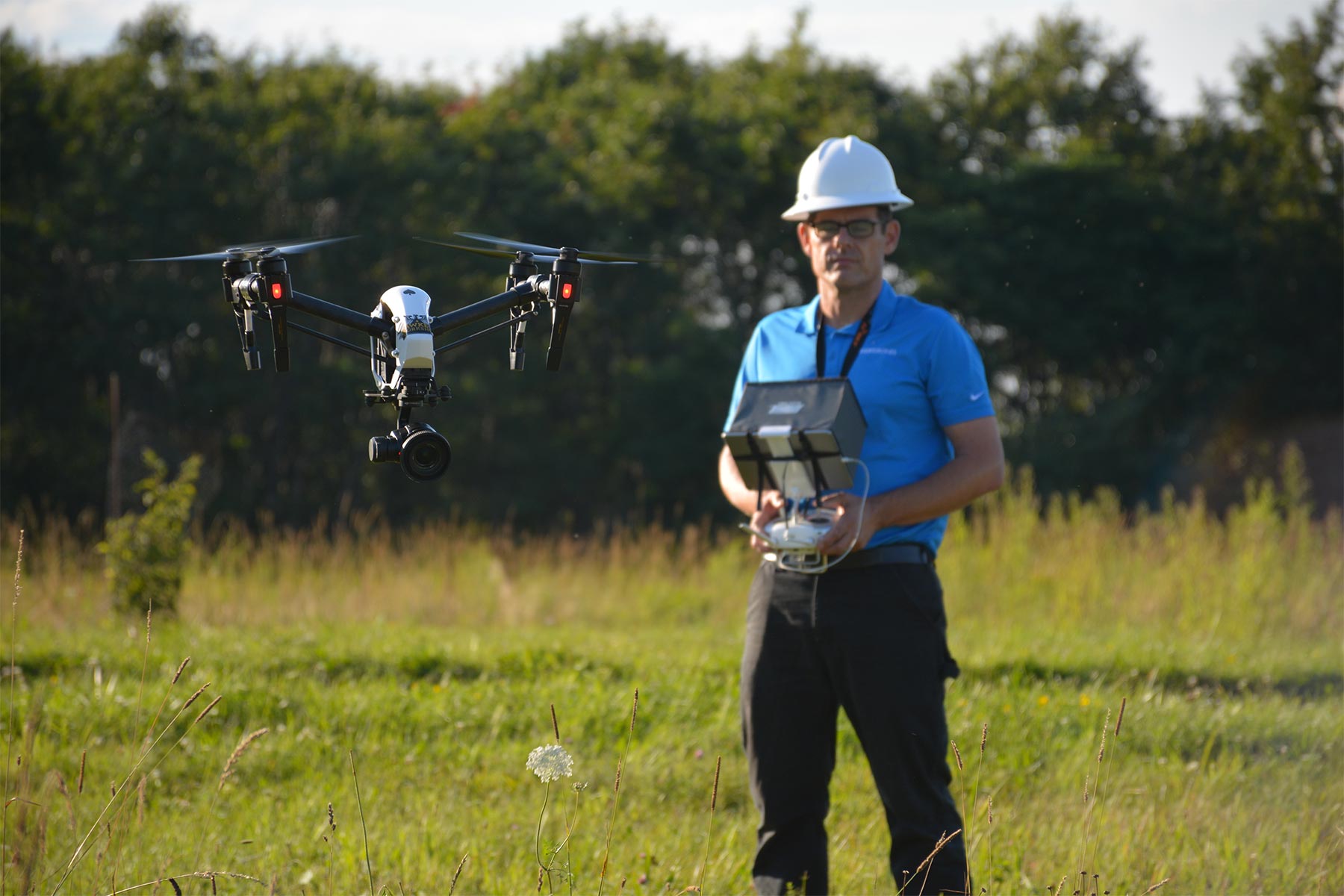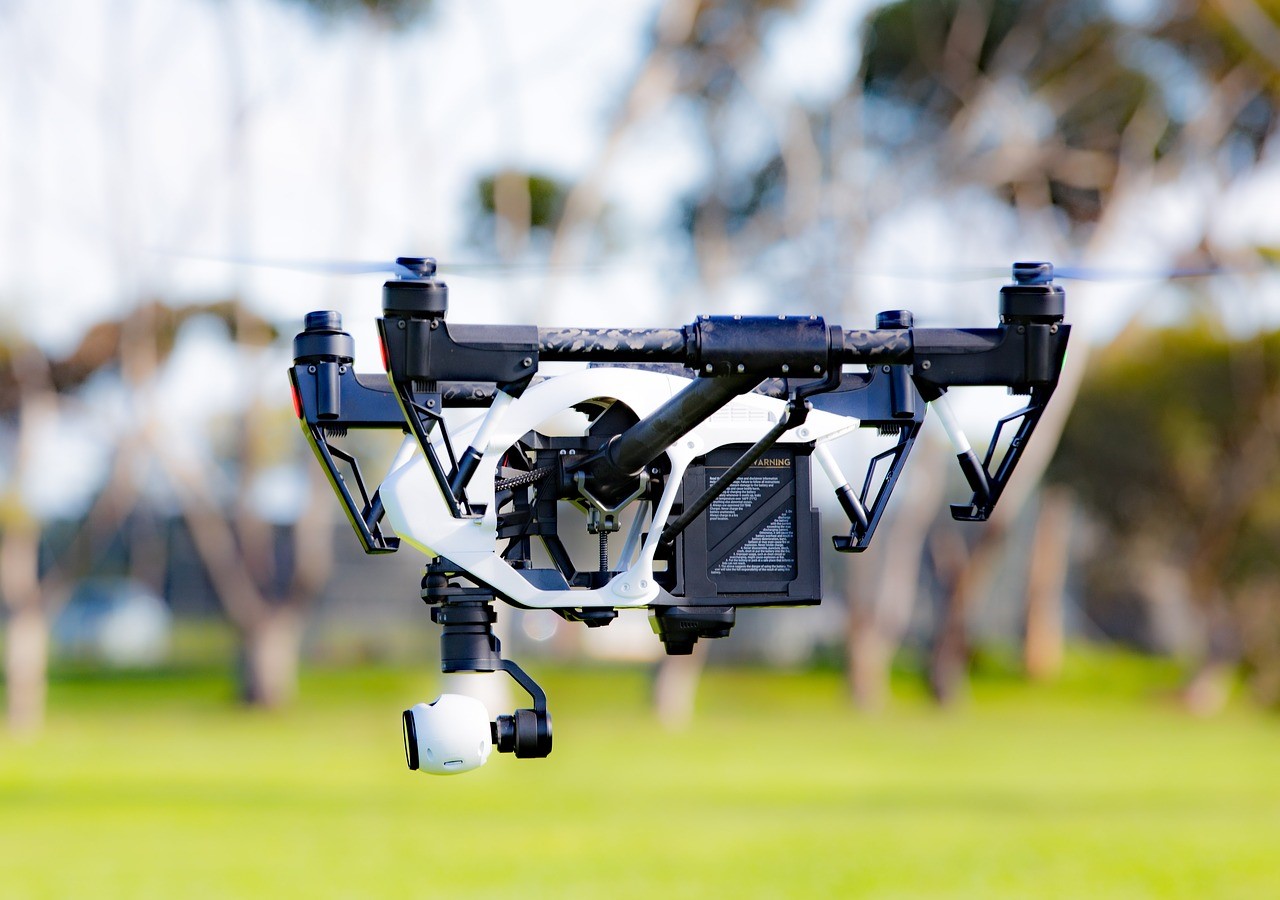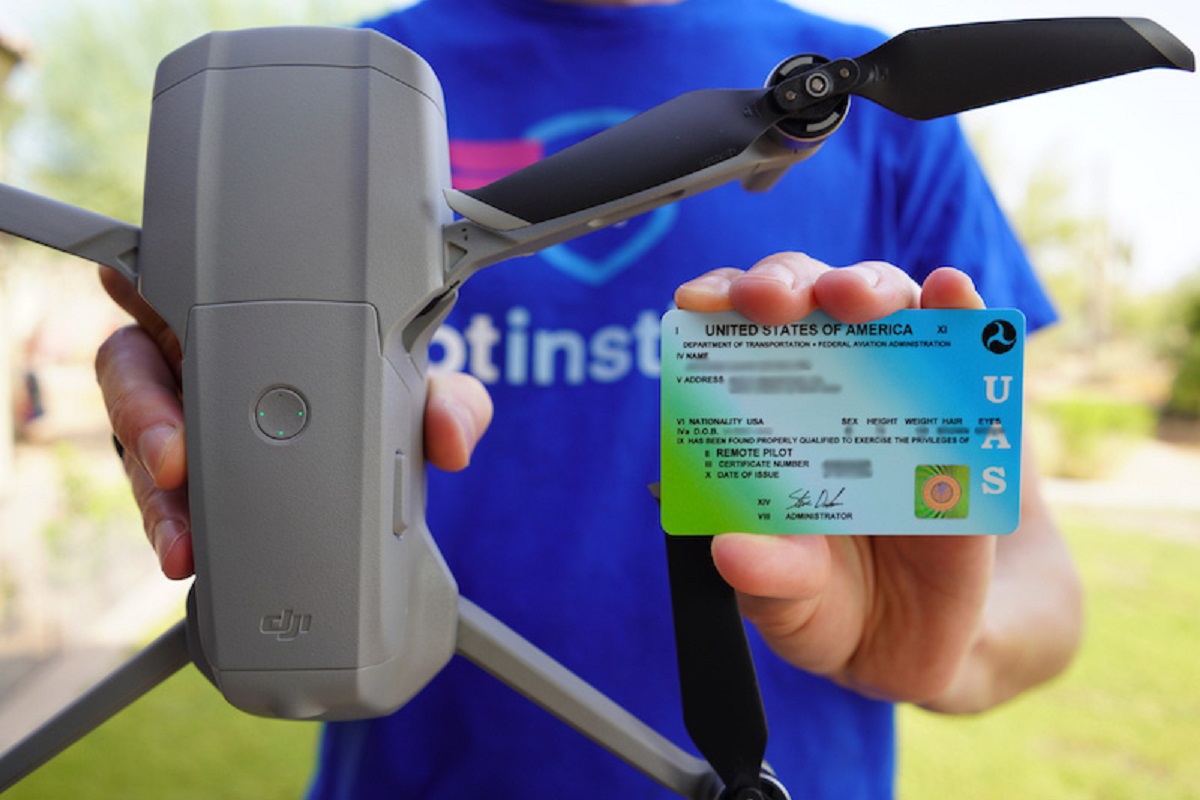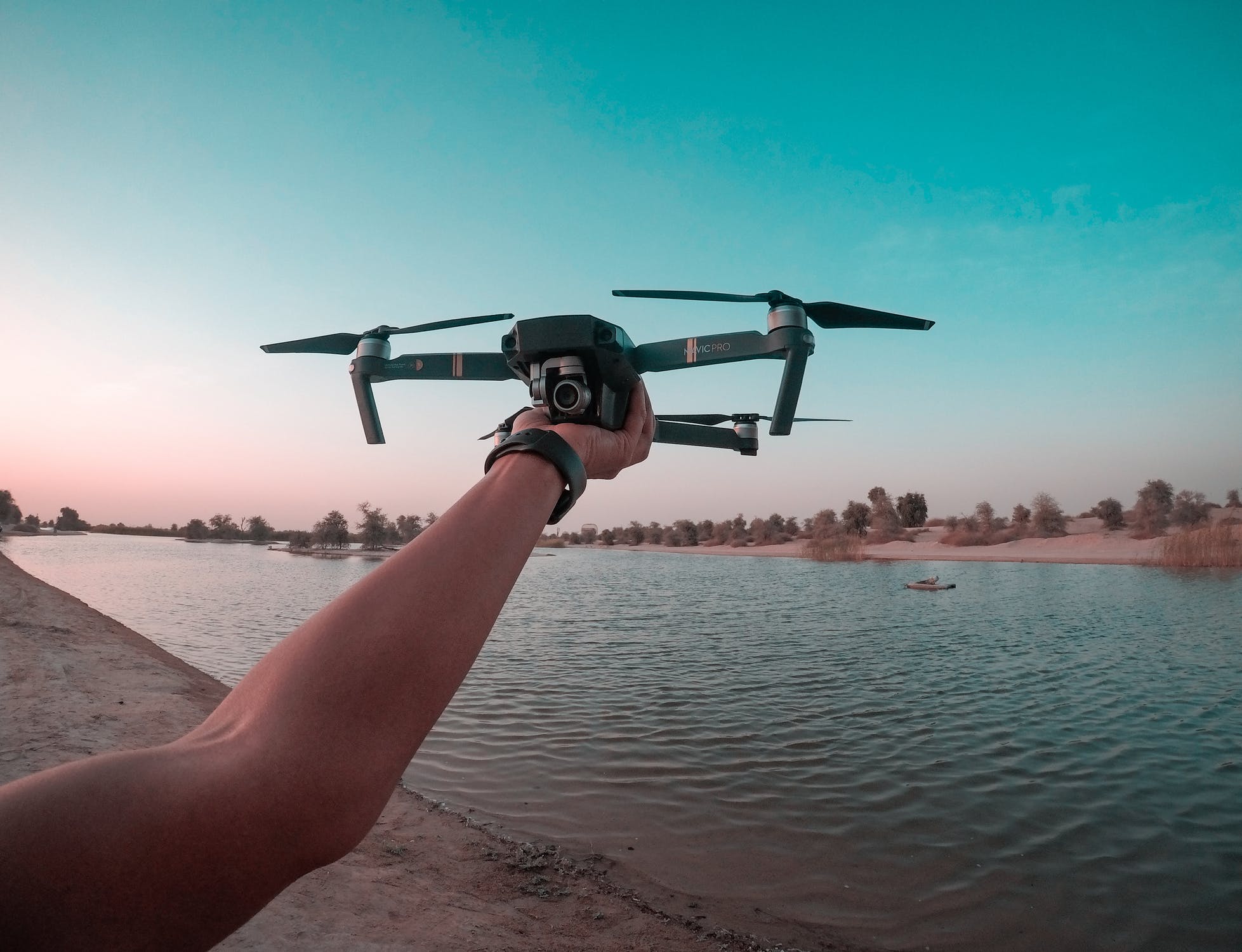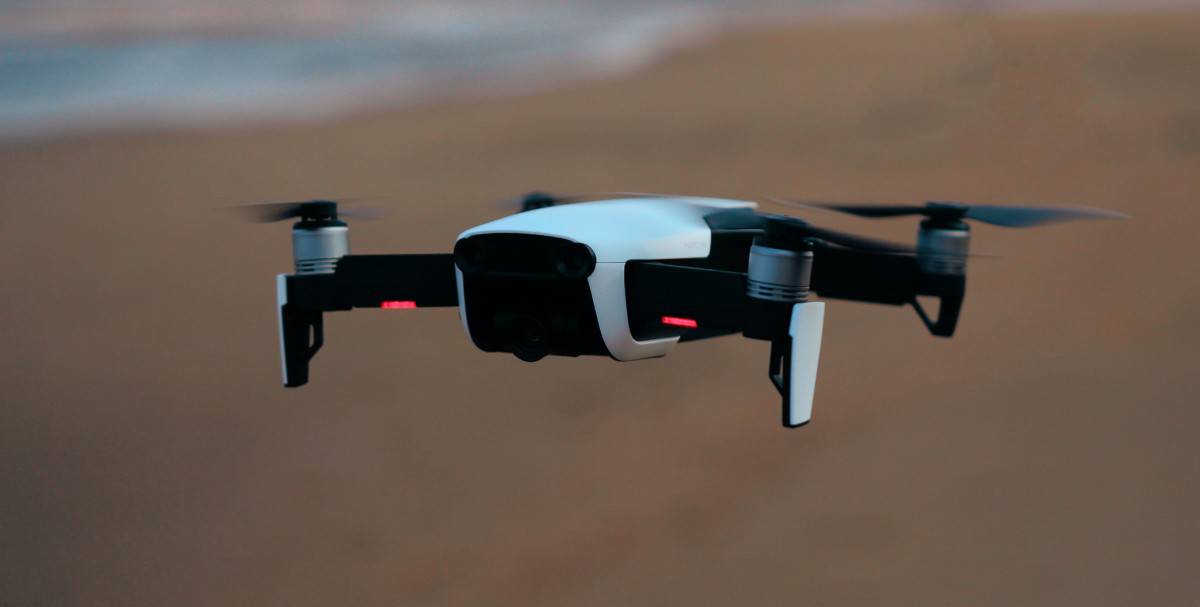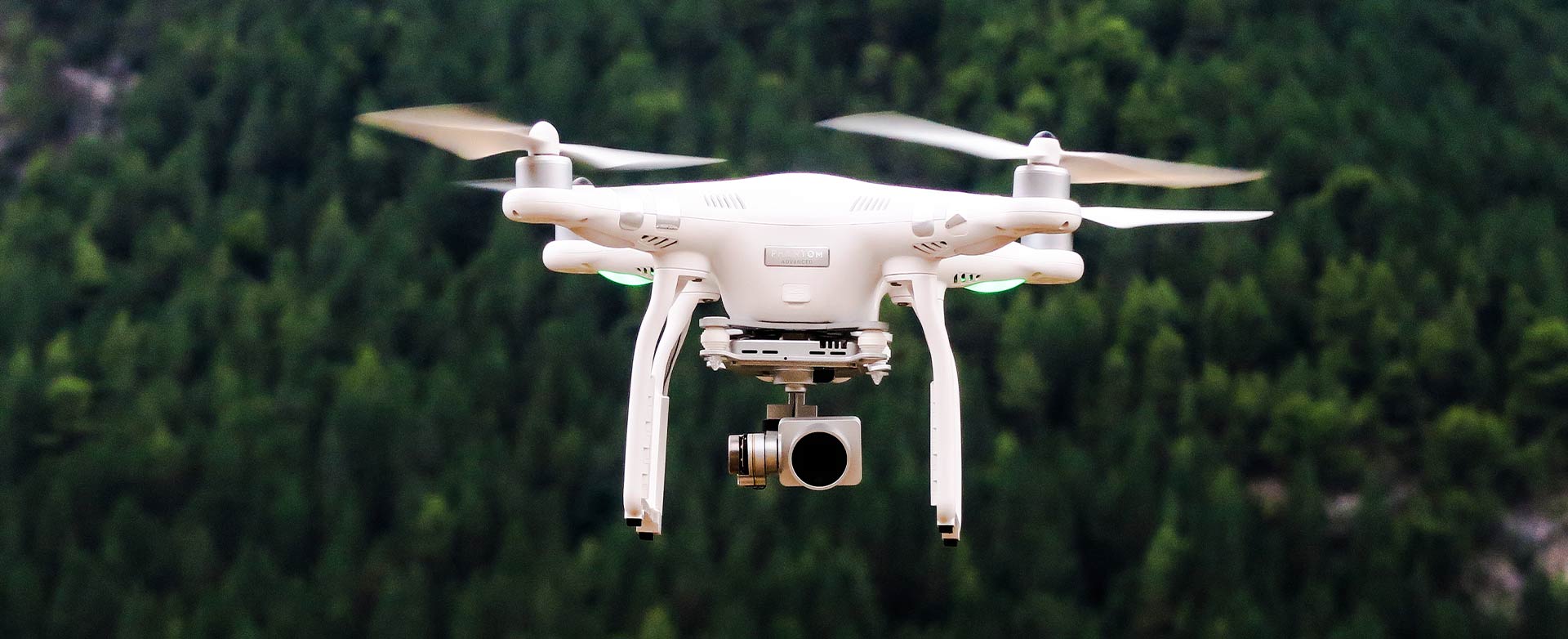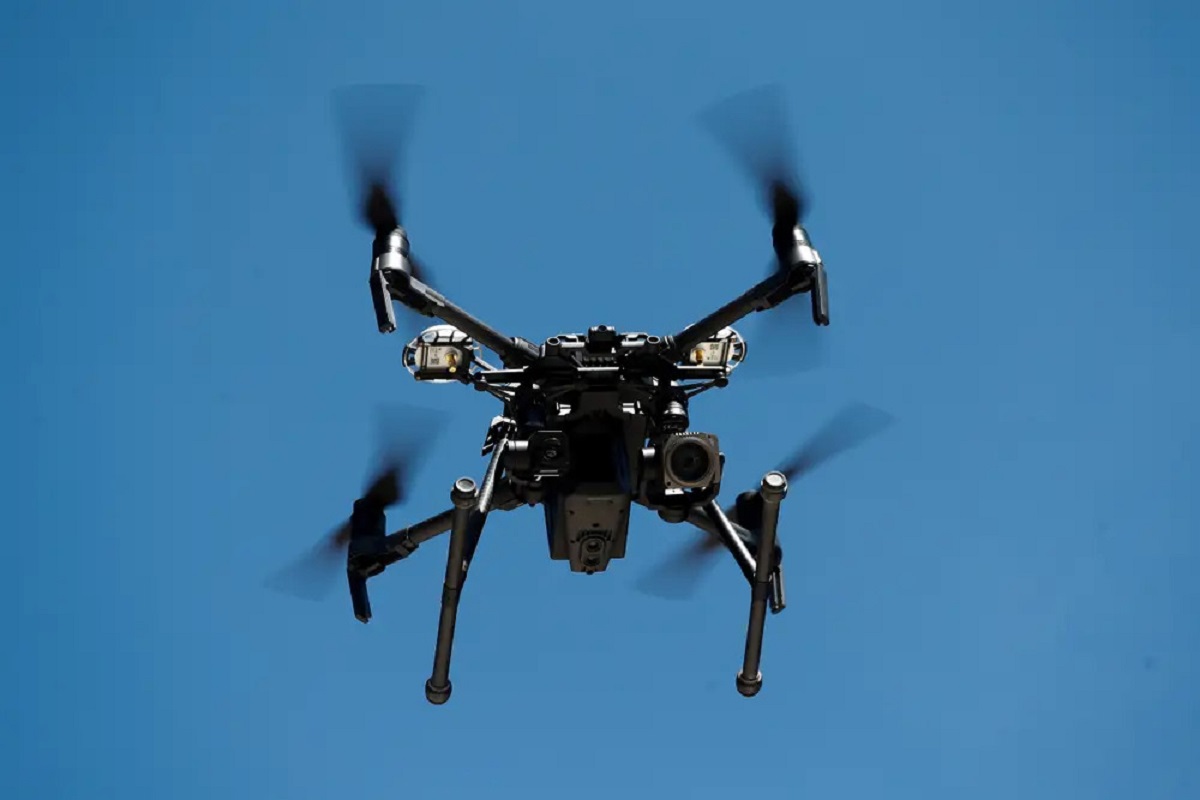Introduction
Obtaining a Part 107 drone license is a requirement for commercial drone pilots in the United States. Whether you’re a seasoned hobbyist venturing into professional drone photography or a newcomer with aspirations of joining the booming drone industry, getting your Part 107 license is an essential step towards achieving your goals.
The Federal Aviation Administration (FAA) introduced the Part 107 regulations in 2016, which established the framework for commercial drone operations. These regulations aim to ensure the safety of the National Airspace System and protect people and property on the ground. By obtaining a Part 107 license, you demonstrate your understanding of the rules and regulations that govern drone operations, making you a responsible and knowledgeable pilot.
With the increasing popularity of drones and their diverse applications, the demand for licensed drone pilots has skyrocketed. From aerial photography and videography to mapping and inspections, the opportunities are vast. Becoming a licensed drone pilot not only allows you to capitalize on these opportunities but also gives you a competitive advantage in the market.
This article will provide you with a comprehensive guide on how to acquire your Part 107 drone license. We will explore the eligibility requirements, study materials, exam registration process, and study tips to help you prepare effectively. Additionally, we will discuss what you can expect on test day, and how to apply for your remote pilot certificate once you pass the exam.
By the end of this article, you will have a clear understanding of the steps involved in obtaining your Part 107 drone license, and be ready to embark on an exciting journey as a certified commercial drone pilot.
Understanding Part 107
Part 107 refers to the set of regulations established by the Federal Aviation Administration (FAA) for the operation of small unmanned aircraft systems (sUAS) in the national airspace. These regulations apply to commercial drone pilots who intend to use their drones for business purposes, such as aerial photography, surveying, or inspections.
Under Part 107, commercial drone pilots are required to obtain a remote pilot certificate, also known as a Part 107 license, to legally operate their drones for commercial purposes. This license demonstrates that pilots have the necessary knowledge and skills to operate their drones safely and in compliance with FAA regulations.
One of the key aspects of Part 107 is the requirement for pilots to pass a knowledge test administered by the FAA. This test covers a wide range of topics, including airspace regulations, weather patterns, emergency procedures, and the principles of flight. It is designed to ensure that drone operators have a comprehensive understanding of the rules and regulations necessary to operate drones safely in the national airspace.
Part 107 also outlines various operational restrictions for commercial drone flights. These restrictions include limitations on altitude, flight over people, and the need for visual line-of-sight during operations. By adhering to these regulations, drone pilots can help maintain the safety of the airspace and minimize the potential risks associated with commercial drone operations.
It is important for commercial drone pilots to familiarize themselves with the specific requirements outlined in Part 107 to ensure compliance with the regulations. By doing so, pilots can operate their drones legally and confidently, while minimizing potential risks and maximizing the opportunities offered by the growing drone industry.
Understanding Part 107 is crucial for aspiring commercial drone pilots. It not only ensures compliance with FAA regulations, but also provides a solid foundation of knowledge and safety practices for operating drones in various commercial applications. With this understanding, drone pilots can navigate the regulatory landscape more effectively and thrive in the exciting world of commercial drone operations.
Eligibility Requirements
Before you can apply for a Part 107 drone license, you must meet certain eligibility requirements set by the FAA. These requirements ensure that only qualified individuals are authorized to operate drones for commercial purposes. The eligibility requirements for obtaining a Part 107 drone license are as follows:
- Age Requirement: You must be at least 16 years old to apply for a Part 107 remote pilot certificate.
- Language Proficiency: You must be able to read, speak, write, and understand the English language. This requirement ensures effective communication with air traffic control and other entities in the national airspace system.
- Medical Condition: Unlike the requirements for manned aircraft pilots, there are no specific medical condition restrictions for obtaining a Part 107 license. However, if you have a medical condition that could significantly impair your ability to safely operate a drone, it is important to assess whether you are fit to fly.
- Legal Status: To become a certified remote pilot, you must be a U.S. citizen, a U.S. national, or a lawful permanent resident. Foreigners who meet certain criteria can also apply for a Part 107 license.
- Passing the Knowledge Test: The FAA requires that you pass a knowledge test to demonstrate your understanding of the regulations and operating procedures for drones. This test includes questions on topics such as airspace classification, weather patterns, emergency procedures, and the effects of drugs and alcohol. Passing this test is a crucial step in the certification process.
- Security Background Check: As part of the application process, you must undergo a TSA (Transportation Security Administration) background check. This check is conducted to ensure that you do not pose a threat to national security.
Meeting these eligibility requirements is essential for obtaining your Part 107 drone license. It is important to carefully review and fulfill these requirements to ensure a smooth certification process.
Now that you are familiar with the eligibility requirements, let’s explore the study materials that will help you prepare for the Part 107 knowledge test and increase your chances of success.
Study Materials
Preparing for the Part 107 knowledge test requires a solid understanding of the regulations, airspace rules, and operating procedures for drones. Luckily, there are various study materials available to help you acquire the knowledge and skills needed to pass the exam. Here are some essential study materials to consider:
- FAA Remote Pilot Study Guide: The FAA offers a Remote Pilot Study Guide that covers all the topics included in the knowledge test. This comprehensive guide provides detailed explanations, sample questions, and diagrams to help you grasp the concepts effectively.
- Online Courses: Many online platforms offer Part 107 exam preparation courses. These courses usually consist of video lectures, practice quizzes, and study materials. Taking an online course can provide you with a structured learning experience and help you focus on the most important topics.
- Drone Pilot Ground School: Drone Pilot Ground School is another popular online resource that offers comprehensive study materials and practice tests. Their course is designed to ensure you have the knowledge and confidence to pass the Part 107 exam.
- Free Online Resources: There are numerous free online resources available, including YouTube videos, blogs, and forums. These resources can supplement your studying and provide additional insights into specific topics.
- FAA’s Aeronautical Chart User’s Guide: Familiarizing yourself with the FAA’s Aeronautical Chart User’s Guide is essential for understanding airspace classifications, reading charts, and interpreting symbols. This guide is a valuable resource for drone pilots operating in different airspace environments.
As you study, it is important to focus on the areas that carry the most weight in the exam. Understanding airspace classifications, weather patterns, emergency procedures, and the effects of drugs and alcohol are key topics to prioritize.
Additionally, taking practice tests is highly recommended to assess your knowledge and familiarize yourself with the exam format. Practice tests can also help you identify areas that require further study and improve your time management skills during the actual exam.
Remember, the key to success in the Part 107 knowledge test is a combination of thorough studying, practice, and a clear understanding of the regulations. By utilizing the study materials mentioned above and developing a study plan, you will be well-prepared to tackle the exam confidently.
Taking the Test
Once you feel adequately prepared and confident in your knowledge of the Part 107 regulations, it’s time to schedule and take the knowledge test. Here’s what you can expect when taking the Part 107 exam:
Test Format: The Part 107 knowledge test is a multiple-choice exam that consists of 60 questions. You will have a time limit of 2 hours to complete the test. The questions are designed to assess your understanding of the regulations, airspace rules, weather patterns, emergency procedures, and drone operations.
Test Location: The Part 107 exam is conducted at FAA-approved testing centers across the United States. You can find a list of authorized testing centers on the FAA’s website, and it is recommended to schedule your exam in advance to secure your preferred date and time.
Bring Identification: On the day of the exam, you will need to bring a valid government-issued photo ID, such as a driver’s license or passport. This identification will be used to verify your identity before you can take the exam.
Exam Fee: There is an exam fee associated with taking the Part 107 knowledge test. The current fee, as of writing, is $160. Payment is typically made online when scheduling your test appointment.
Passing Score: To pass the Part 107 exam, you need to achieve a score of 70% or higher. This means you must correctly answer at least 42 out of the 60 questions on the test. If you do not pass the exam on your first attempt, you can retake it after a 14-day waiting period.
Available Resources: During the exam, you will have access to the FAA’s Airman Certification Standards (ACS), which provides a detailed breakdown of each knowledge area and the associated learning objectives. You can use this resource to double-check your answers or clarify any uncertainties.
Obtaining Results: After completing the exam, your results will be available immediately. The testing center will provide you with a printed score report, which indicates whether you passed or failed the exam. If you pass, you will receive an embossed temporary remote pilot certificate on the same day. The official remote pilot certificate will be mailed to you by the FAA.
It is important to approach the Part 107 exam with a calm and focused mindset. Take your time to carefully read each question and consider all possible answers before making your selection. Remember to manage your time effectively to ensure you have enough time to answer all questions.
Now that you are familiar with what to expect during the Part 107 exam, let’s explore some study tips and strategies to help you succeed.
Preparing for the Exam
Preparing for the Part 107 knowledge exam requires dedicated effort and a structured study plan. By following these tips and strategies, you can maximize your chances of success:
- Create a Study Schedule: Establish a study schedule that works for you. Allocate specific time slots each day or week dedicated to studying for the exam. Consistency is key to retaining information and staying on track.
- Review the FAA Remote Pilot Study Guide: The FAA Remote Pilot Study Guide is an essential resource for exam preparation. Thoroughly go through the guide and take notes on important topics. Pay extra attention to areas where you feel less confident.
- Utilize Online Courses: Consider enrolling in online Part 107 exam preparation courses. These courses offer structured learning modules, practice quizzes, and study materials. They can provide you with a comprehensive understanding of the exam topics and help you identify areas that need more focus.
- Take Practice Tests: Practice tests are invaluable for assessing your knowledge and familiarizing yourself with the exam format. Many online platforms offer Part 107 practice tests that simulate the actual exam. Use these tests to identify weak areas and focus your study efforts accordingly.
- Study Airspace Charts: Become familiar with airspace classifications and the symbols used in airspace charts. Understanding how to interpret and navigate through airspace is crucial for the exam and real-world drone operations.
- Join Study Groups: Engaging with fellow aspiring drone pilots can be beneficial. Join online forums or local study groups to connect with others preparing for the Part 107 exam. Sharing knowledge, asking questions, and discussing topics together can enhance your understanding and motivation.
- Tackle Difficult Topics First: Focus on challenging topics at the beginning of your study sessions when you are mentally fresh and alert. By tackling difficult topics early on, you can dedicate more time and energy to understanding and mastering them.
- Stay Updated with FAA Regulations: Part 107 regulations may evolve over time. Make sure to stay updated with any amendments or changes. The FAA’s website and reputable drone news sources are good resources for staying informed.
- Take Breaks and Rest: While it’s important to dedicate time to studying, it’s equally important to take breaks and rest. Fatigue can hinder your ability to concentrate and retain information. Allow yourself regular breaks to recharge and rejuvenate.
Remember, the key to success is not only memorizing information but truly understanding the concepts and regulations. Focus on comprehension rather than just rote memorization. By utilizing a combination of study materials, practice tests, and effective study strategies, you can approach the Part 107 exam with confidence.
Now that you are well-prepared, let’s move on to the next step: registering for the Part 107 exam.
Registering for the Part 107 Exam
Registering for the Part 107 exam is a simple process that can be done online. Follow these steps to register for the exam:
- Create an FAA DroneZone account: Visit the FAA’s DroneZone website and create an account. Provide the necessary information and complete the registration process.
- Apply for an FAA Tracking Number (FTN): Once you have created your DroneZone account, you will need to apply for an FAA Tracking Number (FTN). This unique identifier is required to schedule your Part 107 knowledge test.
- Schedule Your Exam: Log in to your DroneZone account and select the “Schedule an FAA Exam” option. Follow the prompts to choose a testing center, date, and time that works for you. It is recommended to schedule your exam well in advance to secure your preferred time slot.
- Pay the Exam Fee: After selecting your exam date and location, you will need to pay the exam fee. The current fee, as of writing, is $160. Payment is typically made online using a credit or debit card.
- Confirmation and Authorization: Once you have successfully registered and paid the exam fee, you will receive a confirmation email with details of your appointment. This email will include important information such as the testing center location and any additional instructions.
It is important to arrive at the testing center on the scheduled date and time, prepared and ready to take the exam. Remember to bring a valid government-issued photo ID for identification purposes, as this is required to access the exam.
If you need to reschedule or cancel your exam appointment, you can do so through your DroneZone account. Keep in mind that there may be a fee associated with rescheduling or canceling, so it’s best to make any changes well in advance of your scheduled exam date.
By following these steps to register for the Part 107 exam, you can ensure a smooth process and secure your opportunity to take the test. Once you have successfully completed the registration, it’s time to focus on your exam preparation and studying.
Next, we will dive into some study tips and strategies to help you excel in the Part 107 knowledge test.
Study Tips and Strategies
Preparing for the Part 107 knowledge test requires effective study techniques and strategies to ensure a thorough understanding of the exam content. Here are some study tips to help you excel in your preparation:
- Organize Your Study Materials: Create a system to organize your study materials, whether it’s using digital folders, physical binders, or note-taking apps. Having a well-structured study setup will make it easier to access and review information.
- Create a Study Plan: Develop a study plan that outlines what topics you will study each day or week leading up to the exam. Having a clear study schedule will help you stay organized and cover all the necessary content.
- Break Down the Material: Rather than tackling everything at once, break down the study material into manageable chunks. Focus on one topic at a time, ensuring that you fully understand it before moving on to the next.
- Use Active Learning Techniques: Take an active approach to studying by engaging with the material. This can include explaining concepts out loud, creating flashcards to review, or teaching someone else what you have learned.
- Take Practice Tests: Practice tests are invaluable for familiarizing yourself with the exam format and assessing your knowledge. Take advantage of online resources and official practice tests to simulate the actual exam experience.
- Review Wrong Answers: When reviewing practice tests, pay particular attention to the questions you answered incorrectly. Understand why you chose the wrong answer and learn from your mistakes. This will help you avoid similar errors in the actual exam.
- Schedule Regular Review Sessions: Dedicate regular review sessions to revisit previously studied material. This will help reinforce your understanding and ensure long-term retention of the information.
- Seek Clarification: If you come across any confusing or challenging topics, don’t hesitate to seek clarification. Utilize online resources, forums, or even reach out to fellow drone pilots or instructors for help in understanding difficult concepts.
- Simulate Exam Conditions: As your exam date approaches, consider simulating the exam conditions by taking practice tests in a distraction-free environment within the allocated time frame. This will help you build focus and improve your time management skills.
- Stay Healthy and Well-Rested: Remember to take care of yourself during the study period. Get enough sleep, eat nutritious meals, and stay hydrated. Taking care of your physical and mental well-being will enhance your focus and cognitive performance.
By implementing these study tips and strategies, you can optimize your preparation for the Part 107 knowledge test. Remember to stay disciplined, consistent, and maintain a positive mindset throughout your study journey. With dedication and effective study techniques, you will be well-prepared for success on the exam.
Now that you are equipped with these study tips, let’s move on to the next step: what to expect on test day.
Taking the Part 107 Exam
On the day of the Part 107 exam, it’s important to be well-prepared both mentally and physically. Here’s what you can expect on test day:
- Arrive Early: Plan to arrive at the testing center with ample time before your scheduled exam. This will give you the opportunity to check-in, familiarize yourself with the testing environment, and calmly prepare for the exam.
- Identification and Check-In: When you arrive, present your valid government-issued photo ID to the testing center staff for identity verification. Follow all check-in procedures as instructed by the staff.
- Exam Instructions: Once you are checked in, the exam proctor will provide you with instructions for the exam. Listen carefully and ask for clarification if you have any questions or concerns.
- Accessing the Exam: You will be provided with a computer or tablet to access the Part 107 exam. Ensure that the device is functioning properly before beginning the test.
- Exam Structure and Time Limit: The Part 107 exam consists of 60 multiple-choice questions. You will have a time limit of 2 hours to complete the test. Pace yourself accordingly and allocate enough time to answer each question.
- Test Difficulty: While the exam may be challenging, maintain confidence in your knowledge and abilities. Apply the study techniques and strategies you have learned during your preparation to approach each question thoughtfully.
- Review Questions and Manage Time: Read each question carefully, analyze the options, and select the best answer based on your understanding of the subject matter. If you are unsure of an answer, mark it for review and come back to it later. Be mindful of time and aim to answer all questions within the allocated timeframe.
- Submit the Exam: Once you have completed the exam and reviewed your answers, submit the test for grading. On completing the exam, you will receive a preliminary score report.
- Temporary Remote Pilot Certificate: If you pass the exam, you will receive an embossed temporary remote pilot certificate on the same day. This certificate provides proof of your remote pilot status until the official remote pilot certificate is mailed to you by the FAA.
- Post-Exam Procedures: At the end of the exam, adhere to any instructions given by the exam proctor regarding the return of testing materials or devices. Thank the staff and leave the testing center calmly.
Remember to stay calm, focused, and confident during the exam. Trust in your preparation and approach each question with a clear mindset. With thorough knowledge and effective test-taking strategies, you are well-positioned for success on the Part 107 exam.
Once you have completed the exam, it’s time to await the official remote pilot certificate from the FAA. We will discuss the process of applying for the certificate in the next section.
What to Expect on Test Day
Test day for the Part 107 exam can be both exciting and nerve-wracking. Being well-prepared and knowing what to expect can help alleviate some of that stress. Here’s what you can expect on test day:
- Arrival and Check-In: Plan to arrive at the testing center early to allow time for check-in procedures. Bring your valid government-issued photo ID for identification purposes. The staff will guide you through the check-in process.
- Testing Environment: The testing center will provide a quiet and controlled environment for the exam. Follow any rules and instructions given by the staff to ensure a smooth testing experience.
- Exam Instructions: The exam proctor will provide instructions and answer any questions you may have before the exam begins. Listen carefully and ask for clarifications if needed.
- Exam Format and Duration: The Part 107 exam consists of 60 multiple-choice questions. You will have a total of 2 hours to complete the exam. Pace yourself throughout the exam to ensure you have enough time to review your answers.
- Computer-Based Exam: The exam is computer-based, and the testing center will provide the necessary equipment for you to complete the test. Familiarize yourself with the exam interface to navigate and answer the questions efficiently.
- Question Content and Difficulty: The questions on the Part 107 exam cover a range of topics, including regulations, airspace, weather, and drone operations. Some questions may require critical thinking or scenario-based analysis. Stay focused and apply your knowledge and understanding to select the correct answers.
- Time Management: Managing your time during the exam is crucial. Read each question carefully, but avoid spending too much time on any single question. If you come across a challenging question, mark it for review and move on. Make sure to allocate enough time to review your answers before submitting the exam.
- Exam Results: Immediately after completing the exam, you will receive a preliminary score report at the testing center. This will indicate whether you passed or failed the exam. If you passed, you will also receive an embossed temporary remote pilot certificate on the same day.
- Post-Exam Procedures: Return any testing materials or devices provided by the testing center staff. Thank the staff for their assistance and exit the testing center calmly.
- Next Steps: If you pass the Part 107 exam, your official remote pilot certificate will be mailed to you by the FAA. This certificate serves as proof of your remote pilot status. Once you receive it, you can begin operating your drone commercially under Part 107 regulations.
Remember to approach the exam with confidence and trust in your preparation. Take deep breaths, stay focused, and apply your knowledge and understanding to answer the questions to the best of your ability.
Now that you have a clear understanding of what to expect on test day, it’s time to await your exam results and, hopefully, celebrate a successful outcome.
Exam Results and Feedback
After completing the Part 107 exam, you will receive immediate feedback on your results at the testing center. Here is what you can expect regarding your exam results and feedback:
Preliminary Score Report: Once you submit your completed exam, the testing center will provide you with a preliminary score report. This report will indicate whether you passed or failed the exam. If you pass, it will also display your score based on the number of questions answered correctly.
Passing Score: To pass the Part 107 exam, you must answer at least 42 out of the 60 questions correctly, which equates to a minimum score of 70%. Achieving this passing score demonstrates your knowledge and understanding of the regulations and requirements for safe drone operations.
Performance Analysis: While the preliminary score report does not provide detailed feedback on your specific strengths or weaknesses, you can use it as a general indicator of your performance. This report will help you gauge your overall understanding of the exam material.
Exam Recap: After receiving your preliminary score report, the exam proctor may offer a brief recap of your performance. They can provide insights into areas that you performed well in or areas that may require further attention for improvement.
Feedback from Incorrect Answers: Though the exam itself does not provide immediate feedback on individual questions or identify which answers were incorrect, you can use this experience as an opportunity for self-reflection. Review the questions that challenged you and research the correct answers to deepen your understanding.
Self-Assessment and Learning: Take the time to reflect on your exam performance and identify areas where you excelled or had difficulty. Use this self-assessment as a guide to focus your further study efforts and address any gaps in your knowledge.
Post-Exam Learning Resources: After the exam, continue engaging in learning resources to further enhance your understanding of drone operations, airspace rules, and regulations. Online forums, communities, and additional study materials can provide valuable insights and continued learning opportunities.
Remember, the performance feedback from the exam is just the beginning of your journey as a certified remote pilot. Continuously seek opportunities for growth, stay updated on the latest regulations, and strive for ongoing improvement in your drone piloting skills.
Now that you have thoroughly prepared for and received your exam results, the next step is to apply for your remote pilot certificate. We will explain the application process in the following section.
Applying for a Remote Pilot Certificate
Once you have successfully passed the Part 107 exam and received your preliminary score report, you can proceed to apply for your remote pilot certificate. Here’s how to apply:
- Access the FAA IACRA System: Visit the FAA’s Integrated Airman Certification and Rating Application (IACRA) website to begin the application process. IACRA is the online platform used for remote pilot certificate applications.
- Create an IACRA Account: If you don’t already have an IACRA account, you will need to create one. Provide the required information, including your personal details and pilot information.
- Complete the Application: Follow the prompts in the IACRA system to complete the application. You will need to provide information such as your exam pass date, FTN (FAA Tracking Number), and personal information as it pertains to your remote pilot certificate.
- TSA Security Background Check: As part of the application process, you will be required to complete a Transportation Security Administration (TSA) background check. This process is initiated through the IACRA system, and you may need to provide additional information or documentation, if requested.
- Submit the Application: Once you have completed all the required fields and provided the necessary information, review the application carefully for accuracy. Then, submit the application for processing.
- Wait for Approval: After submitting your application, the FAA will review your information and conduct the necessary background checks. The timeframe for approval can vary, but you can monitor the status of your application through the IACRA system.
- Receive Your Remote Pilot Certificate: Once your application is approved, you will receive your official remote pilot certificate in the mail from the FAA. This certificate confirms your status as a certified remote pilot under Part 107 regulations.
It’s important to ensure that all information provided in your application is accurate and matches the details you provided during the exam registration process. Any inconsistencies or errors in your application could delay the approval process.
Once you receive your remote pilot certificate, ensure that you keep it in a safe place and carry it with you whenever you are operating your drone commercially. The certificate serves as proof of your remote pilot status and may be required to be presented upon request by authorities or clients.
With your remote pilot certificate in hand, you are now officially qualified to operate your drone commercially under Part 107 regulations. Make sure to adhere to the airspace rules, safety guidelines, and any other applicable regulations as you embark on your drone piloting journey.
Congratulations on obtaining your remote pilot certificate! Now it’s time to put your knowledge and skills to use and enjoy the exciting world of commercial drone operations.
Conclusion
Obtaining a Part 107 drone license is an important step for anyone looking to operate a drone commercially in the United States. By acquiring this certification, you demonstrate your knowledge and understanding of the regulations and safety practices required for responsible drone operations.
In this comprehensive guide, we have covered the various aspects of getting your Part 107 drone license. We began by introducing the significance of the license and the opportunities it opens up in the booming drone industry. We then explored the eligibility requirements, study materials, exam registration, and study tips to help you prepare effectively for the Part 107 knowledge test.
We delved into what to expect on test day, including the exam format, time management, and exam results. We also discussed the process of applying for a remote pilot certificate after passing the exam, ensuring you are aware of the necessary steps to complete the application successfully.
By following the guidelines provided throughout this guide, you can increase your chances of passing the Part 107 exam and receiving your remote pilot certificate. Remember to approach your studies with dedication, utilize the available study materials, and practice with sample questions to reinforce your understanding.
Once you have obtained your Part 107 drone license, continue to stay updated with the latest regulations, safety practices, and best practices in the industry. Successful drone piloting involves ongoing learning and keeping up with changes in technology and regulations.
As you venture into the world of commercial drones, remember to prioritize safety and responsible drone operations. Adhere to airspace rules, respect privacy, and continuously refine your piloting skills to ensure a positive and professional experience for both yourself and those around you.
Congratulations on taking the initiative to obtain your Part 107 drone license. Now, armed with the knowledge, skills, and certification, it’s time to soar high and embrace the incredible opportunities that come with being a certified commercial drone pilot.







